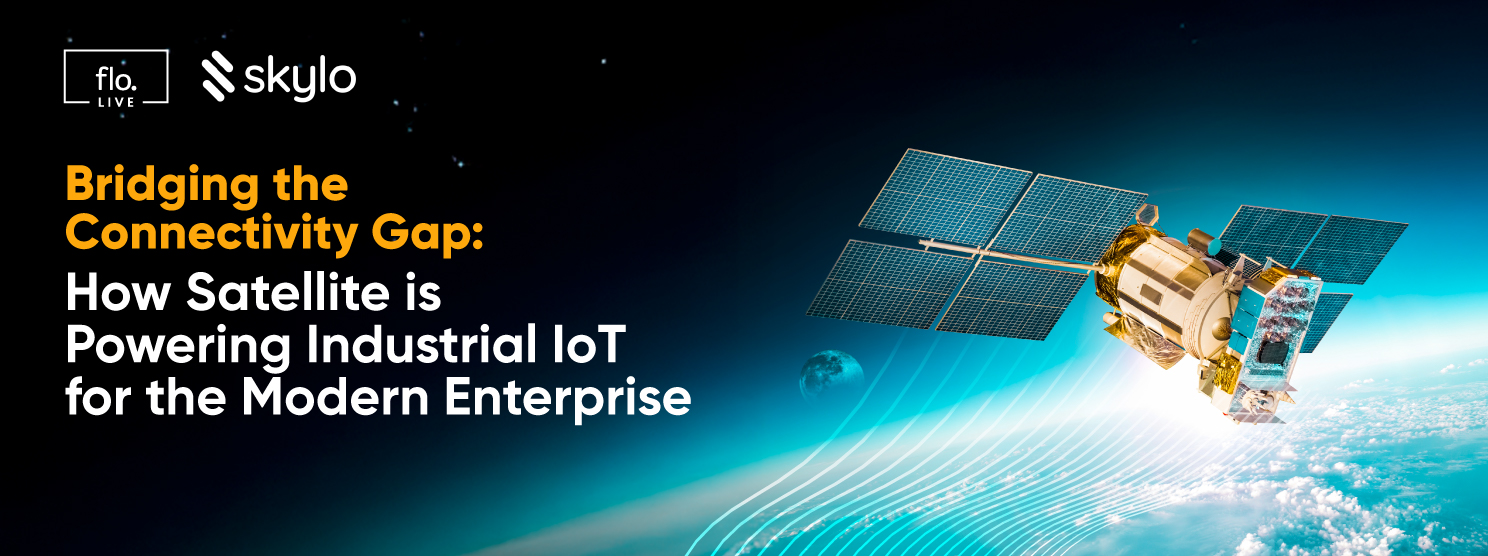Page Contents
Bridging the Connectivity Gap: How Satellite is Powering Industrial IoT for the Modern Enterprise

Page Contents
In today’s global economy, businesses continue past the edges of the cellular network. Critical industries, from agriculture and logistics to energy services, mining, and environmental monitoring operate in the world’s most remote regions, far beyond the reach of cell towers. For decades, this connectivity gap meant that valuable assets were unconnected, unmonitored and crucial information was left uncollected. When terrestrial networks are unavailable, a new, more comprehensive approach to connectivity isn’t just an advantage; it’s a necessity.
Satellite connectivity has undergone a revolution and is now connecting devices on a global scale, opening incredible new opportunities for industries most impacted by connectivity gaps. Gone are the days of expensive, proprietary hardware and operational complexities.
Today’s Non-Terrestrial Networks (NTNs) are built on the same 3GPP industry standards as cellular networks, converging terrestrial and satellite connectivity into a single, seamless experience. Just as your cellphone works across hundreds of networks, the 3GPP is the foundation that ensures interoperability between devices and networks globally. This Direct-to-Device (D2D) satellite network ensures that from the factory floor to the most remote corners of the earth, your business is always connected.
However, embracing this new frontier requires understanding what sets transformative satellite solutions apart from the rest. It’s about deploying a robust, efficient, and cost-effective platform that feels like a natural extension of your existing operations.
The Blueprint for True Global Connectivity
As you explore how advances in satellite connectivity can help your business consider breakthrough features that make D2D a game changer.
1. Simplicity Through Standard Devices
In the past, adopting satellite connectivity was hindered by complexity, cost, and the need to deploy specialized hardware. Today, we have solved these issues.
Instead of requiring expensive, specialized satellite phones or terminals, satellite connectivity, now works with compatible, NTN capable smartphones, industrial IoT devices, and applications that your business already uses. This now means that standard cellular modules and devices are being designed with both satellite and cellular capabilities.
This simplifies deployment, dramatically lowers costs, and allows your teams to focus on their work, not on finding bespoke solutions for these out of coverage assets. The latest chipsets from Nordic, Qualcomm, MediaTek, and Samsung Exynos now have satellite connectivity built right in. This means that industrial IoT hardware can seamlessly connect to satellite networks when out of cellular network coverage. Mobile Network Operators (MNOs) such as Verizon, Telefonica Germany, KPN, Tele2, and Deutsche Telekom and leading MVNOs like floLIVE now offer integrated IoT services to support both terrestrial and non-terrestrial networks.
Together with floLIVE, Skylo extends truly global coverage by complementing NTN with floLIVE’s advanced terrestrial IoT infrastructure. floLIVE’s own core network, global local-breakout gateways, and multi-IMSI eSIM technology ensure continuous, compliant connectivity whether a device is on the ground or beyond traditional coverage.
This hybrid approach is already being applied in the field. For example, 701X, a us-based precision ranching company leverages floLIVE’s global IoT network and Skylo’s satellite connectivity to keep a livestock connected via its smart ear tags connected across vast rural areas.
These devices automatically switch between multiple mobile networks and Skylo’s satelite network, ensuring reliable, real-time data transmission even from the most remote locations.
2. Seamless Integration, Not Added Complexity
Your connectivity solution should simplify your operations, not complicate them. The most effective satellite services integrate effortlessly with your existing IoT connectivity provider so that you continue to maintain your existing connectivity relationships – meaning one bill, one account team, one troubleshooting team, and one set of dashboards.
Look for solutions that provide integrated cellular and satellite connectivity, allowing you to maintain your connectivity provider. This eliminates the need for complex custom integrations and ensures a consistent, manageable experience for your entire device fleet.
3. Reliability You Can Build a Business On
The network you need, needs to be carrier-class. This means high reliability and low downtime that your critical operations demand. Your integrated terrestrial and satellite solution from your MNO should support a large breadth of devices, multiple use cases, offer 24/7 network support, and have secured full regulatory approval and landing rights in all your operating regions. This is the foundation of scalability you can build upon and trust you can count on.
4. Power Efficiency for the Long Haul
For remote industrial IoT deployments, power consumption is paramount. A network designed for the real world must support critical power-saving features like Power Saving Mode (PSM) and Extended Discontinuous Reception (eDRX). These protocols allow devices to operate in a “deep sleep” mode for extended periods, waking only to transmit data. This allows battery powered devices to operate for years, making large-scale, autonomous deployments feasible. Connecting via satellite should not consume extra power and should not degrade the life cycle of these device deployments. It is important that whether the device is on Terrestrial Network (NT) or Non-Terrestrial Network (NTN), they should consume roughly the same power as not to limit deployment options.
5. A Foundation Built for the Future The best way to think about bringing satellite connectivity to your operations is to approach the opportunity with a long-term strategy. Your D2D solution should be based on ratified industry standards for connectivity, like 3GPP Release 17, ensuring broad adoption in the ecosystem, interoperability with many devices, and a clear path for future innovation. A provider with a transparent roadmap for new features and technologies is a partner invested in your long-term success.
Putting It All to Work: Unlocking Brazil’s Potential
For a country with the vast and varied geography of Brazil, these technological advancements translate directly into transformative economic and environmental opportunities, resulting in immediate, positive business impacts. An overlay satellite connectivity solution, like Skylo’s, which embodies these modern principles, is a powerful enabler for Brazil’s vital industries.
- Mining: In the remote states of Minas Gerais and Pará, satellite connectivity allows for tracking heavy machinery to optimize use and prevent theft. It also facilitates remote environmental monitoring of tailing dams and air quality, all using low-cost IoT sensors to directly connect to non-terrestrial networks.
- Forestry and Agriculture: From the Amazon to the Mato Grosso, farmers can deploy low-power soil and moisture sensors across vast plantations, far from the nearest cell tower, enabling precision farming that conserves water and maximizes yield. Forestry companies can track inventory, logging equipment and ensure crew safety deep in the jungle.
- Environmental Protection: Satellite-based IoT allows for large-scale, real-time environmental management. Conservation groups can track endangered species in the Pantanal, government agencies can deploy sensors to monitor for illegal deforestation, and researchers can gather climate data from remote weather stations without worrying about battery life, ensuring the longevity of this precious ecosystem.
By bridging the digital divide, direct-to-device satellite connectivity unlocks a future where no corner of the globe is out of reach. It is the key to driving economic growth, ensuring worker safety, and enabling the sustainable stewardship of our planet’s most incredible natural resources.
About Skylo
Skylo Technologies is a global Non-Terrestrial Network service provider based in Mountain View, CA, offering a service that allows smartphones, wearables, vehicles, and IoT cellular devices to connect directly over existing satellites.
Devices connected over satellite are managed and served by Skylo’s commercial NTN vRAN, featuring a 3GPP standards-based cloud-native base station and core. Skylo works with existing satellite operators, network operators, and device makers to provide subscribers an anywhere, anytime connectivity solution between terrestrial and satellite networks.
Skylo’s focus is on enabling connected services for people outdoors and connected workflows for machines at work across critical industries such as agriculture, maritime, logistics, mining, and others, in addition to mass-market consumer devices. For more information, visit www.skylo.tech.
Join Our Newsletter
Get the latest tips and insights in our monthly newsletter.









